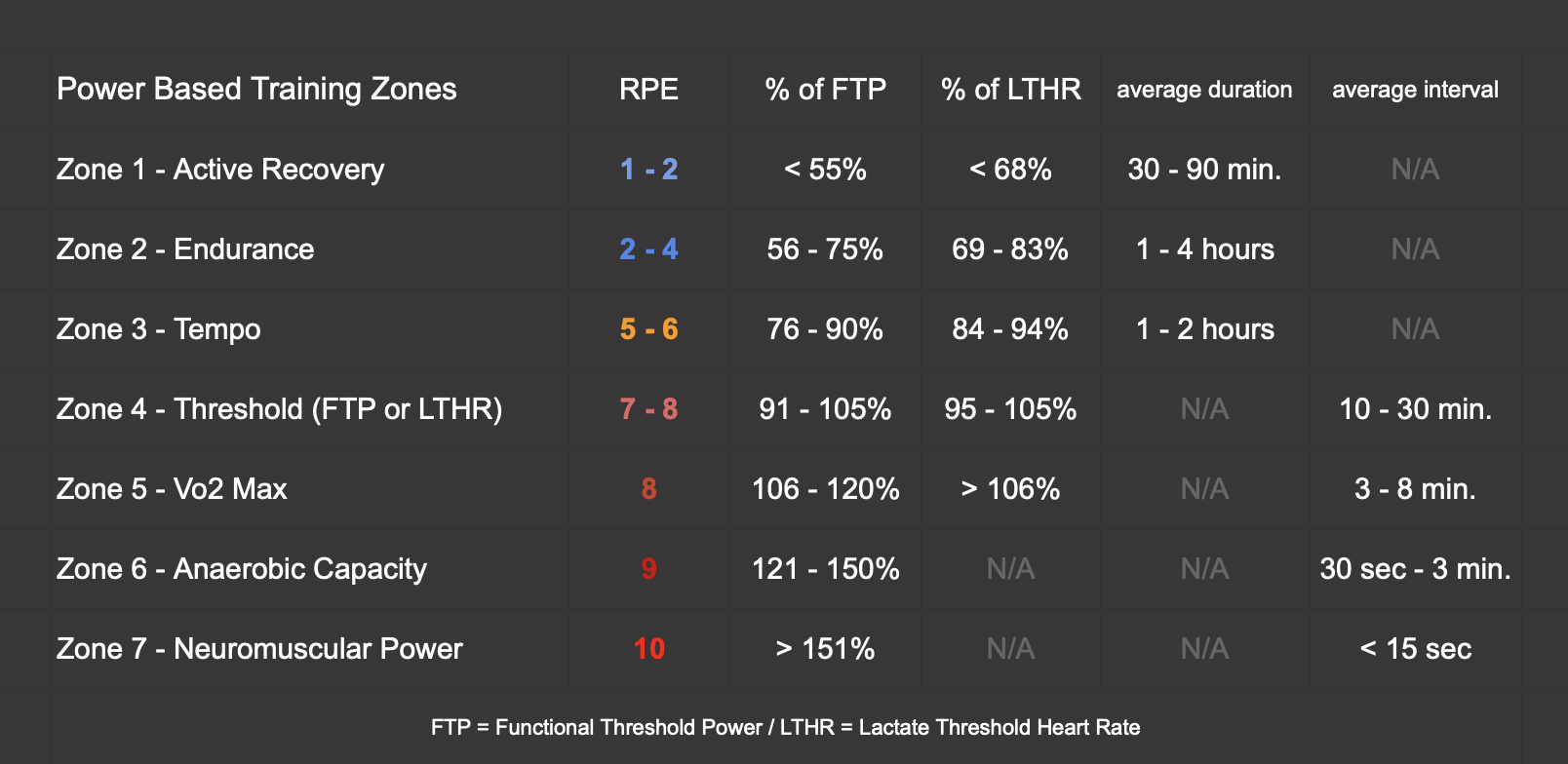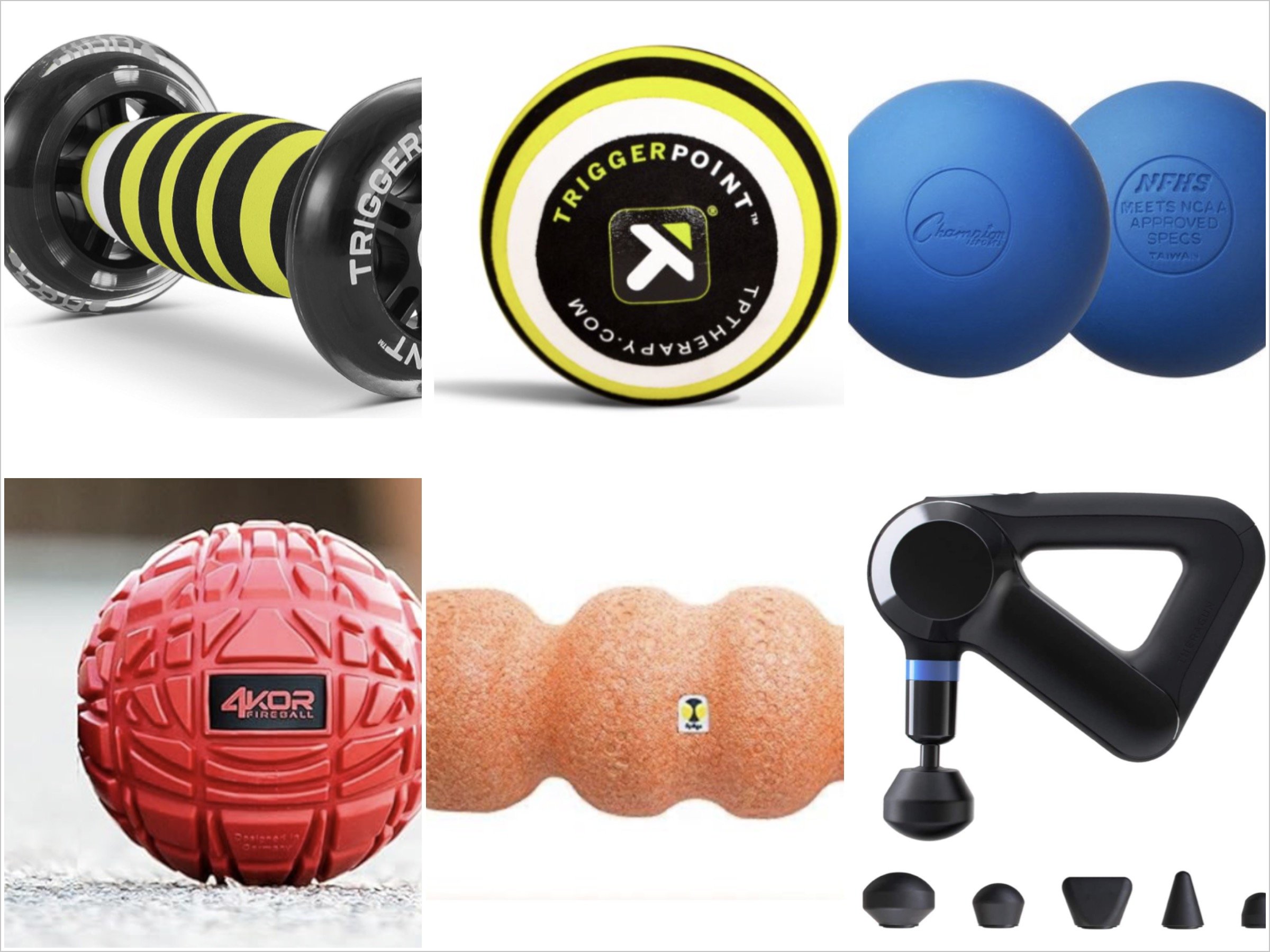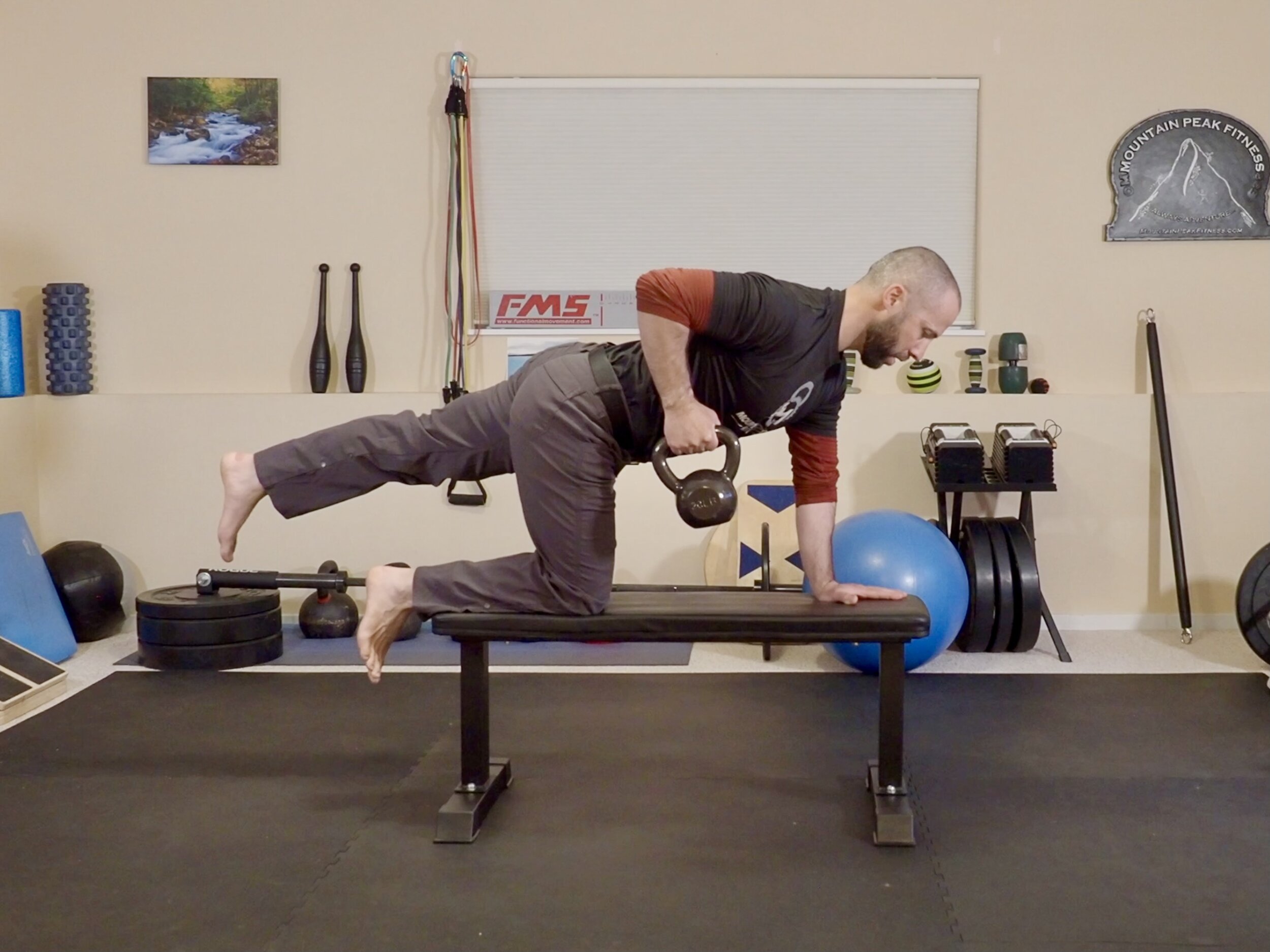Power, Heart Rate & RPE Training Zones for the Endurance Athlete
Your Training Zones are essential for you as an athlete to ensure that you are truly making your hard days hard and your easy days easy. Establishing your zones will increase the efficacy of your training and prescribed workouts so that you are training at the right intensity levels for maximum results.
There are many schools of thought on this topic as to which zones work best. What to keep in mind, whether zones are established by power, heart rate or good old fashion perceived exertion, they were created to help coaches communicate more efficiently with their athlete's about the intended goal for their scheduled workouts and overall training plan. This gave the athlete targets to hit or zones to stay within, ensuring that they were adhering to the training plan devised by the coach.
There are a lot of variables to consider when a coach design's a training plan for each individual and it is very important for that athlete to give as much feedback for the given workout.
Establishing your training zones using your Functional Threshold Power (FTP) and Lactate Threshold Heart Rate (LTHR), will HELP give guidance to your training and a clearer understanding of the workloads that are given to you. Your FTP along with other Critical Power (CP) outputs will be what your zones are based off of by using a percentage of them to create each individual zone. To learn more and how to test for your Functional Threshold Power (FTP) and Lactate Threshold Heart Rate (LTHR), click here.
With heart rate based zones for running & cycling we break it down into 5 zones. This is because HR has a lag and when training calls for efforts in your Vo2 max, anaerobic or neuro zones, your heart rate will take some time to climb into the zone but your intensity and feel for the effort (RPE) can start as soon as the set begins. This is why we rely on RPE to ensure the athlete is at the right intensity and why Zone 5 is called "Vo2 Max & Beyond". RPE takes a bit of practice to dial in and is heavily influenced (just as the others are) by overall stress levels, recovery, nutrition, quality of sleep, motivation, etc.
About Your Training Zones
Zone 1 / Active Recovery
This is your active recovery zone. It’s a very important zone to integrate within your training and not one to neglect. This is a zone that athletes tend to spend very little time in, which is not a good thing. Fitter athletes will benefit greater from doing recovery workouts in this zone compared to no workouts at all. This is considered an easy riding or running day, applying light pedal pressure or running on flat terrain at an easy pace. An example would be doing a recovery ride after consecutive hard days of training on the bike or competing in a race. This will allow your body to flush out built up waste products, keep your body in a rhythm of riding and maintain a suppleness in your muscles and connective tissues. Blood & oxygen will continue to pump throughout the body to aid in recovery. It is very important to stay within this zone and not make an easy day too hard. At times, complete rest rather than a light workout would be a greater benefit physically as well as mentally.
Zone 2 / Endurance
Also called the Aerobic zone. This is an all day pace or the “classic long slow distance” (LSD) training. Long endurance workouts are what is needed to maximize the benefit potential of this intensity zone while keeping your RPE 2-4. It is vital that you do enough of your workouts whether riding, running, climbing, swimming, strength training, etc. in this zone to prepare your body for the higher demands of training & competing later on. Over time, training in this zone will lead to a stronger & more efficient cardiorespiratory (heart, blood vessels, lungs, passageways, etc.) and muscular system leading to an overall increase in your stamina and ability to endure. You want to practice being as efficient as possible in this zone, focusing on mechanics, cadence, breathing, hydration, training stress, etc. Practice is an integral part for all sports and cycling or running is no different.
Zone 3 / Tempo
Some coaches call this zone the “gray zone” of training while others call it the “meat and potatoes” of every cyclist training program. This is a level of intensity that most athletes will find themselves in and when balanced appropriately with other training zones, it can cause some of the greatest adaptations to your fitness. However, spending too much time in this zone will not make you a faster sprinter or better on the climbs, it will just mean that you're good at tempo, so remember that the right balance of your training time and focusing on improving your limiters will make you a more complete athlete. Tempo workouts need to be done at a sustainable pace that feels fast and takes some work to maintain. Do not underestimate the amount of work that is required when training in this zone and the amount of recovery time afterwards.
Zone 4 / Threshold
Threshold workouts are focused on improving your FTP (functional threshold power) and strength at your LTHR (lactate threshold heart rate). This should be the goal of every endurance athlete. The working sets in this zone are done right at your threshold, slightly below (sub-threshold) or above (super-threshold, Joe Friel). These are very challenging and stressful sets that require solid rest intervals (Ri) between sets. Its a fine balancing act with being on the edge of your sustainable intensity for the given sets duration. These are vital workouts to integrate into your training. Increasing your FTP for the cyclist & pace for the runner, at threshold, is the primary objective. All other zones are determined by these threshold numbers.
Zone 5 / VO2 Max
VO2 Max is the maximal volume of oxygen uptake. Zone 5 focuses on improving your VO2 Max with 3 - 8 minute intervals that are performed at max intensity for each given sets duration, with an equal or greater rest interval. The key to maximize training in zone 5 is making sure that your intensity level is high enough and held for the sets duration. You must be rested and focused for these sets and the training zones beyond this. It is vital that you manage your stress well, get good sleep, take a nap if possible and eat clean. This will ensure that you can put forth a good effort for the prescribed workout.
Zone 6 / Anaerobic Capacity
These efforts are done at an even higher intensity level then z5 and the duration of each interval is cut down to 2 minutes - 30 seconds in length with 2-3 minute Ri’s (rest intervals). There is a big difference between a 30 second and a 2 minute effort, with both training the anaerobic system. With intense variety in your efforts, this allows for some creative intervals built into your workout. These efforts are going to be painful and should be done when your fresh or slightly overreaching. Its not a workout to force in when you're tired or stressed because you won’t be able to reach the desired intensity levels needed to challenge your anaerobic capacity. These are difficult efforts to get right without the use of a powermeter or experience with RPE.
Zone 7 / Neuromuscular Power
These are very short highly intense intervals lasting under 30 seconds, usually falling within the 10 second range. They place a huge demand on your kinetic chain (musculoskeletal & nervous system) and energy systems. Don’t focus on what your powermeter or Heart Rate monitor is saying, just focus on giving it your all, controlling the bike, keeping good running form and being safe. These are highly explosive efforts and can be performed in a variety of ways. Maximum recovery time of 5-10 minutes is required in order for repeatability and to place the proper amount of stress on the body for proper adaptation to occur.
As important as creating your training zones are, we don’t want you to become 100% dependent on them, nor do we want you to believe the numbers are written in stone. Learn to listen to your body and what it is telling you. Become very familiar with the RPE Scale (Rating Perceived Exertion).
















